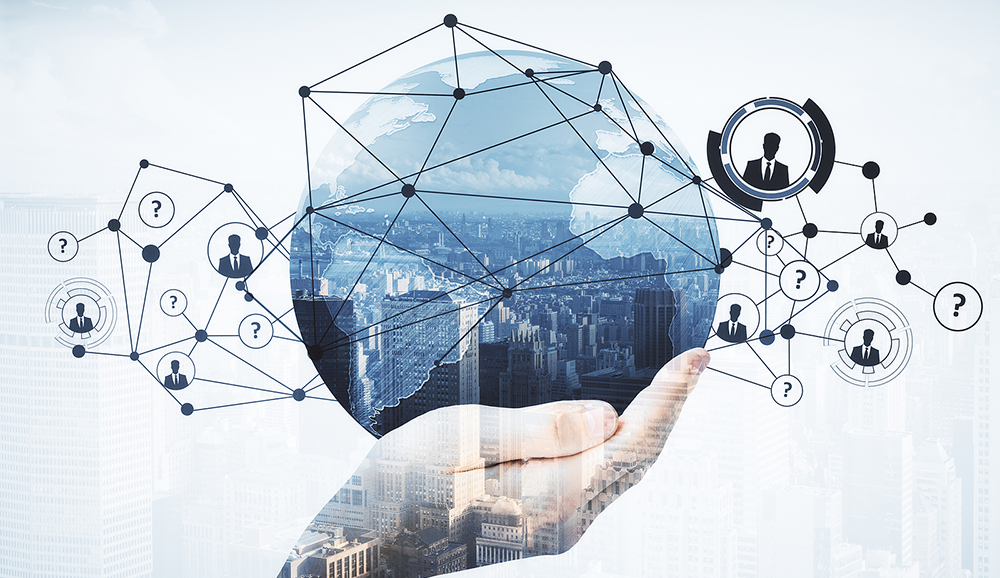How COVID-19 Is Accelerating the Virtualization of Hiring

The COVID-19 crisis has thrown the staffing industry a significant curve ball, just as it has the rest of the economy. However, with modern automation and virtualization tools, hiring can continue unaffected and with significant advantages over traditional in-person processes. Adversity breeds opportunity and innovation, and many companies are now embracing new technology that will power us not only through the current crisis but into the years beyond.
For instance, the broadband and cable provider Spectrum recently shifted its hiring process to be 100 percent virtual, and it only took the company about a week to make this transition. The first time that a candidate meets another human being during the company’s hiring process is on their first day at work, and even then, the employee takes their assets home to work remotely.
Businesses are racing to align their staffing approaches for this era of social distancing, using tools ranging from videoconferencing services like Skype and Zoom to more feature-rich solutions. Beyond simple communication platforms, there are solutions that are purpose-built for modern hiring. Utilized effectively, such solutions can offer an automated process that seamlessly collects all the information necessary to make a hiring decision. Some solutions can even help boost the quality of those hiring decisions by providing advanced analytics and assessment capabilities.
It’s Bigger Than the Crisis
The shift to automated, virtual hiring in the face of COVID-19 is also part of a larger movement toward more sophisticated and widespread data capture and analytics in hiring. With a higher quality and quantity of data, smarter algorithms can extract greater insight, presenting it to talent managers so they can make more accurate decisions about whom to hire, promote, and develop.
Artificial intelligence (AI) and other advanced analytics should be viewed as aids to human decision-making in the hiring process, and the research supports this claim. In his new book, Talking to Strangers, Malcolm Gladwell recounts a study that found AI could make 25 percent more accurate decisions than judges about which defendants should be granted bail. In addition, psychologist Adam Grant has compiled many examples of poor human-driven hiring decisions, from The Kansas City Star rejecting a cartoon application from Walt Disney to record labels turning down the Beatles, Madonna, and Ed Sheeran.
Leading organizations have been making the shift to automated, data-driven processes for the last several years. Bank of America, for example, implemented a hiring assessment which, in its first year of use, saved candidates more than 4,500 hours of time. The tool also increased new hire performance and saved the company almost $7 million in turnover costs.
Approaching AI and Analytics With Care
While automation and analytics have the power to speed up our hiring processes and provide superior candidate experiences, organizations must be strategic about how they implement these technologies. In particular, it’s important to be aware of a few possible pitfalls:
- AI applications can have unforeseen consequences, including producing racially biased results. This can happen if researchers train AI algorithms on human data that is inherently biased, as the AI will simply learn to replicate and even amplify the human biases. Microsoft famously let a chatbot train itself on Twitter messages, and it took less than a day for it to become horribly racist. More recently, facial recognition tech led to the wrongful arrest of a Michigan man.
- Much of the early and even current crop of AI solutions trades more on hype than on scientifically verified results. If an AI company does not share clear, scientific proof of its offering’s usefulness, it is safe to assume that such proof does not exist.
- Finally, humans must always be cognizant of the need to keep AI in check so that it is harnessed for the good of humankind. If we use it without consideration for how it can benefit individuals, it may eventually become a dehumanizing force that renders organizations hyper-efficient at the cost of human well-being. This can happen, for example, if unemployment is high (which, of course, it currently is) and organizations can be picky about whom to hire. In this scenario, candidate experience may take a back seat as companies scramble to hire the top candidates.
When used correctly and intentionally, AI can and does improve our world. HR organizations have many exciting and innovative tools to choose from to begin automating and virtualizing their hiring processes. The key to selecting the right tool is to look beyond the marketing hype. Ask vendors for proof that their tools are effective. To set your organization up to reap the benefits of advanced analytics, you should also collect and store any human-level data that can be analyzed for insights into job success within your organization.
New technology is revolutionizing talent management and ushering in a more seamless, efficient, and effective hiring flow. The current pandemic is simply speeding the adoption of these new technologies — although, we do have to be careful not to get swept up in the rush. Be mindful of all potential ramifications of AI if you want to use it wisely.
Eric Sydell is executive vice president of innovation at Modern Hire.

